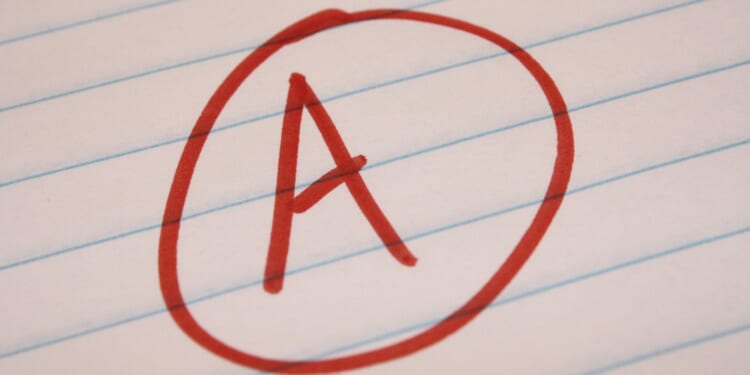Parents, as a general rule, always want the best for their children. Many parents are invested in their child and in their child’s educational success. They take warning signs of a substandard academic performance seriously. For example, a 2023 study coauthored by Gallup and Learning Heroes found that 97 percent of parents who know their child is below grade level in math are worried about their child’s math skills. Once parents knew their child was struggling academically, that became the biggest concern in the parent’s mind — above bullying, school sports, or social media. Parental concern can be a huge boost for a student’s academic well being. Parents can protect homework time, connect with teachers, or, if they have the means, hire tutors to get their child back on track.
But parents don’t know to be concerned about their child if they’re receiving mixed signals about their child’s academic progress.
In the Learning Heroes and Gallup study, almost nine in 10 parents said their child is at or above grade level in reading (88 percent) and math (89 percent). This is simply not true. Standardized test scores suggest that less than half of the nation’s children are actually performing at grade level.
Why are parents so disconnected from their children?
One answer might lie in their student’s grades. Report cards, which largely originated in the early 1800s by public school visionary Horace Mann, have long been intended to inform parents and students on the rate of the student’s academic progress. Parents consistently use their child’s report card as the primary way to ensure that their child is doing well. A majority (64 percent) of parents cite report cards as an important measure to know how their child is achieving.
So, with less than half of the nation’s children performing at grade level, what do their report cards communicate?
As reported by parents, a high majority (79 percent) of students are mostly receiving Bs or higher on their report cards.
It’s not just parental bias towards their darling children that leads parents to say that the report cards are stamped with (unearned) high marks. A 2023 study coauthored by EdNavigator, Learning Heroes, and TNTP examined two nationally representative school districts and found that among students who were both chronically absent and behind grade level, around four in ten students received a B or higher in core subjects in 2022. (In 2019, that number was close to one in five, meaning that more students that were behind grade level received a B or higher in 2022.)
The study’s authors suggested that grading practices during the pandemic did not change to reflect decreased actual learning by students, nor did they change post-pandemic to reflect a dearth of understanding. Other studies have indicated that grade inflation has been systemic for some time, even before the pandemic.
It seems probable that high report cards, therefore, send a false signal to parents that their student is performing well academically.
Parents who know better can do better for their children. Most parents (74 percent) who know that their child is performing below grade level in math are likely to have scheduled meetings with their child’s teacher for personalized advice. Parents can ensure that their children are consistently in school, or that they have support for their homework. But when the parent is kept in the dark, it’s difficult for them to lend a hand.
Teachers might not be the ones at fault for these missed signals. In a recent study on equitable grading, a majority of teachers said that they both disliked most equitable grading practices (which tend to lead to higher grades) and that they faced administrative pressure to keep grades high. Indeed, Minnesota lawmakers and administrators happily hailed this year’s graduation rates as a success as the highest on record; there was no mention of the fact that this year’s graduating class performed historically poorly on national assessments such as the ACT and the NAEP.
High grading standards may increase student retention rates, but in the long run, they positively affect student achievement. While being held back in middle or high school can be incredibly difficult for students, student retention in elementary school can ensure higher academic performances in the future. In fact, states who are outperforming Minnesota in reading gains, like Mississippi, have protected the right of administrators to hold back students who cannot yet read.
Accurate grading effectively communicates with parents and colleges. As one in four of Minnesota’s students are considered chronically absent from school, proportionally changing grades should signal to parents that there is a serious academic problem with their child.
On an anecdotal note, I was part of the American Experiment team that attended Minnesota’s (delightful) State Fair this year. We brought a huge map of Minnesota’s school districts, each labeled with their respective percentage of third grade students who were proficient in reading. Again and again, my heart broke as I watched parents read a dismal number marking their district’s reading proficiency, and then turn to their child, confused and bewildered, wondering, Is it possible that you are one of the children reading below grade level?
Unfortunately, the odds are not in their favor. Parents, teachers, and administrators must band together in order to beat these headwinds and ensure that students have strong educational opportunities. One good place to start is by enabling teachers to cast aside inaccurate grading signals of unearned As and Bs.










